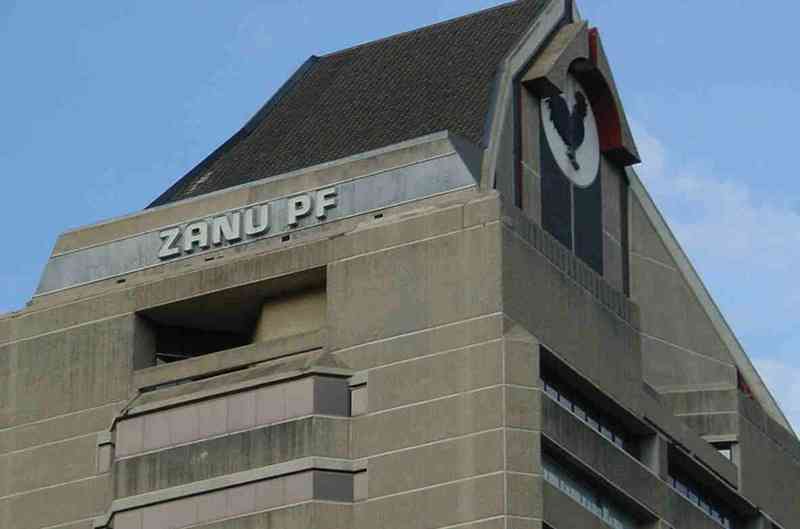
ZIMBABWEANS are pledging beds, fridges and other household property as collateral for small loans from financial institutions, as limited access to credit, liquidity crunch and inflation stifle income-generating activities.
As inflation and joblessness persist, financial institutions are increasingly targeting the working poor with asset-backed loans that threaten to turn survival credit into a new form of predatory lending.
In the Reserve Bank of Zimbabwe (RBZ)’s 2025 Mid-Term Monetary Policy statement, some lenders are issuing loans secured by household property.
The central bank raised alarm over the social risks associated with this trend, urging closer regulation and consumer protection.
With wages stagnant and formal credit scarce, many families have little choice but to pledge essential goods to keep food on the table — a development that underscores the fragility of Zimbabwe’s economic recovery and the human cost of financial
exclusion.
“As at June 30, 2025, the Collateral Registry recorded 3 329 active registrations with a combined principal value of ZiG56,3 billion,” RBZ governor John Mushayavanhu said in the 2025 Mid-Term Monetary Policy statement yesterday.
“Microfinance institutions were the leading users with 1 384 registrations, followed by banks with 1 167 entries.
- Zimbabwe needs to rethink economic policies
- Zimbabwe needs to rethink economic policies
- Forex demand continues to fall
- Digital platforms transfer ZW$8tn
Keep Reading
“In terms of the value of movable collateral, banks accounted for ZiG32 billion, while law firms registering on behalf of clients recorded a total value of ZiG23,9 billion.”
He said since its inception in November 2022, the Collateral Registry had recorded a total of 7 074 security interest notices in movable assets.
“Of these, 3 329 notices (47%) remain active, while 3 745 (53%) have expired. Lending institutions continue to expand the types of movable assets which qualify as collateral,” Mushayavanhu said.
“During the half-year to June 30, 2025 collateral ranged from household goods, private vehicles, trucks, agricultural equipment to shares.”
According to the Collateral Registry, the paper counted for approximately 12 978 types of collateral recorded on the registry.
Household goods dominated with 4 006 followed by private vehicles (2 597), Notarial General Covering Bonds (1 661), trucks (1 440) and agricultural equipment (955) rounding up the top five.
“In pursuit of financial stability and fostering consumer protection, the Reserve Bank undertook a number of market conduct activities to assess microfinance institutions’ compliance with the Core Client Protection Principles as enunciated in the First Schedule of the Microfinance Act [Chapter 24:30],” Mushayavanhu said.
“In the February 2025 Monetary Policy statement, the Reserve Bank highlighted that it had received a number of complaints against microfinance institutions regarding predatory lending practices.”
He said the surveys and the market conduct supervision inspections completed to date, established that in general, microfinance institutions largely complied with the Microfinance Act and the Consumer Protection Framework.
“There were, however, incidents of non-compliance relating to disposal of clients’ assets without the requisite court orders and over-deduction of monthly payments,” Mushayavanhu said.
“The Reserve Bank has instituted supervisory action on the non-compliant institutions and will continue to intensify its market conduct surveillance on the sector during the year to ensure compliance.”
RBZ revealed that a number of credit-only microfinance institutions reported charging interest rates on loans and advances ranging between 7% and 15%, with some outliers charging rates as high as 25% per month.
Consequently, the central bank is instituting appropriate corrective supervisory action on these microfinance institutions, in line with section 37 of the Microfinance Act [Chapter 24:30].
“Microfinance institutions are required on an ongoing basis, to adhere to responsible pricing practices and ensure that effective interest rates (all-inclusive) reflect the cost of funds, fairness and the need to avoid over-indebtedness,” Mushayavanhu said.
“The Reserve Bank will continue to monitor the terms and conditions of business activities to ensure adherence to the Microfinance Act and the Consumer Protection Framework No 01-2017/BSD.”
This framework sets out minimum regulatory standards for consumer protection expected in terms of section 4C of the Banking Act [Chapter 24:20].
Banks were not spared from scrutiny.
“On aggregate, the banking sector remains safe and sound as reflected by the satisfactory key financial soundness indicators,” Mushayavanhu
said.
“There are, however, some issues of prudential concern at a few institutions and the Reserve Bank is instituting appropriate and proportionate supervisory action in terms of the Banking Act [Chapter 24:20] and the Microfinance Act [Chapter 24:30].”










